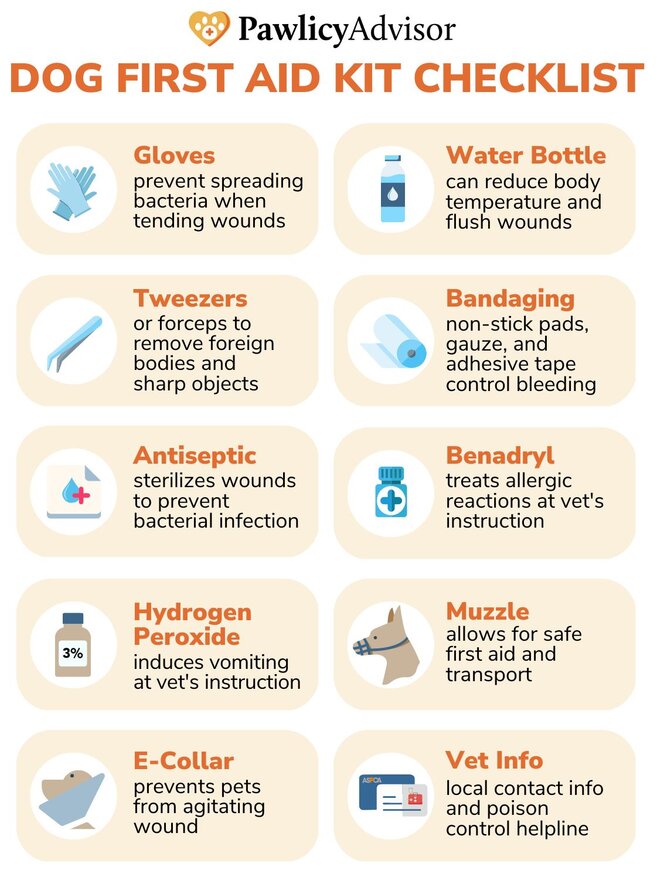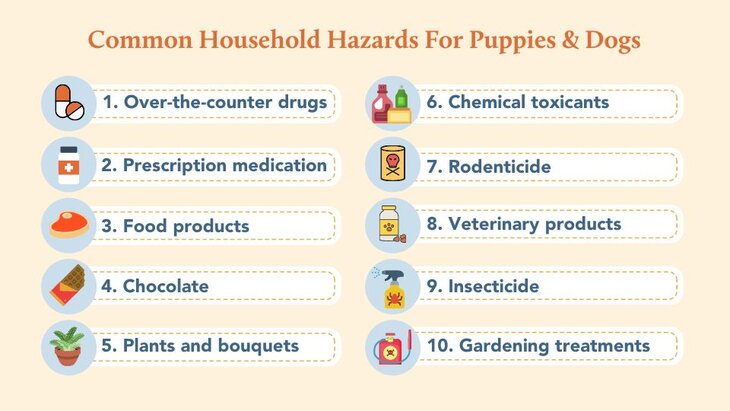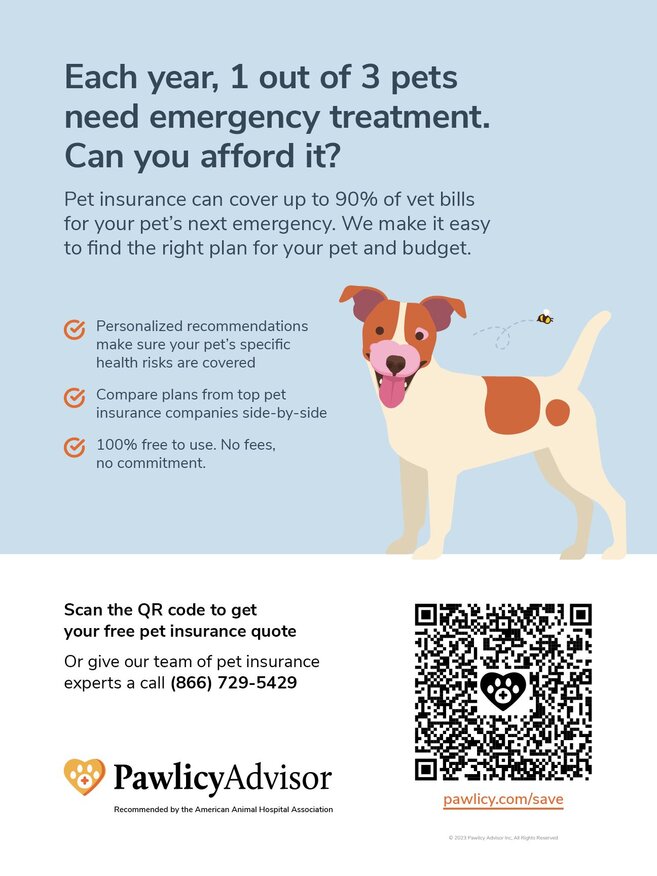5 Veterinary Bulletin Board Ideas To Try In Your Office
Associate Veterinarian, Speaker, Author - Penn-Ohio Veterinary Services and KMB Veterinary Media LLC
No matter how efficient we try to be in the clinic, clients will spend some time waiting in the lobby or exam room. Veterinary teams can take advantage of this time by providing education through bulletin boards, videos, brochures, and handouts. Here are five client education topics to consider featuring on your clinic's bulletin boards:
Get vet client handouts to print and share on your office bulletin board.
Common Emergencies and Illnesses
One in three pets will experience an emergency every year .1 While some emergencies are obvious to our clients, such as a pet hit by a car or attacked by another animal, others may not be as easily recognized. Giving clients the tools to recognize such emergencies — including clinical signs, treatment options, and associated costs — can help them prepare for unexpected situations. Remember to include emergency care options if your clinic isn't open.
Think about the conditions you see most commonly and start with education on those. Consider examples such as:
We can go a step further by educating clients when emergencies are preventable. Putting prevention costs alongside the costs of treating the disease can be a powerful tool. For example, demonstrating how easy parvovirus is to prevent with a vaccination, along with the price of a DA2PP vaccine compared to the cost of treating parvovirus, can help to reinforce the importance of the vaccination.
Finally, to really connect with pet owners, ask them if their pets have experienced these emergencies and share their stories along with photos. A collaborative conversation moves cases from potential threats to real experiences that clients can connect to emotionally.

Common Toxicities
Some toxins, like chocolate, are now well-known to pet owners. However, many other types of toxins for pets have the potential to be deadly or cause serious harm. Use your bulletin board to educate clients on toxins like certain pet medications and their use, as well as plants, grapes, rodenticides, and xylitol. Consider giving your lists a seasonal focus by discussing common toxins seen around specific holidays, like Lillies at Easter.
Make sure that your bulletin board includes information about medical information and what clients should do in the event of an exposure. Who should they call? How quickly should they respond? The telephone number of the ASPCA Poison Control Hotline is a great resource to share in the event of an emergency.

Preventive Care Recommendations
Investing in preventive care improves the quality and quantity of our patient's lives. Clients hear repeated recommendations throughout their appointments, but verbal or visual information is more effective for some clients. Bulletin boards offer a great way to visually display your most common preventive care recommendations, such as:
- Screening tests
- Vaccinations
- Parasite prevention
- The importance of annual exams
Remember to use this opportunity to discuss your recommendations, why you make them, and how they benefit the pet. Highlight patients who have benefitted from annual wellness exams , such as a cat diagnosed with diabetes due to screening bloodwork. Consider also discussing how preventive care benefits the client, such as protection from zoonotic diseases and the benefits of the human-animal bond when their pet is healthy.

Meet the Team — and Understand Their Roles
Not all bulletin boards need to be medical. Many clients see the same faces each visit, but they may not realize how much each individual does in the clinic. This recognition is especially true for our credentialed veterinary technicians.
Make a display that highlights your team members, along with photographs of them doing all the amazing things they do daily – patient restraint, monitoring anesthesia, drawing blood, comforting patients, etc. Team highlights will help show your clients the level of individualized care their pets receive at your office and appreciate each team member’s role.
You can also make this even more personalized by sharing fun facts about your team members, including their favorite breeds, number of personal pets, and hobbies. The more opportunities for connection we create between our clients and team members, the higher the level of trust we can develop. This connection ultimately improves the client experience and heightens the patient care received while fostering team-building in the vet clinic, as well.
Pet Insurance and Other Financial Options
Veterinary care comes at a cost, but almost half of pet owners need to prepare for the costs of pet ownership. 2 Informing clients of their options to help offset the cost of pet care, such as pet insurance and care credit, can be a valuable tool to help them say yes to your diagnostic and treatment recommendations.
Instead of discussing specific insurance companies, which you shouldn't do without an insurance license, discuss how pet insurance can help offset the costs of veterinary care . Consider a Frequently Asked Questions board that answers the most common questions you receive and highlights key points about pet insurance , such as there is no network, most plans work on a reimbursement system, and the best plan for an individual pet will vary. You can also print a simple QR code for them to scan and access educational resources and assistance with finding the right plan for their pet like Pawlicy Advisor.

Final Thoughts
Once you've chosen the topics you want to highlight, engage your team members to bring these ideas to life. Capitalize on their creativity and artistic abilities. Invite them to share photographs and reach out to clients to get their personal stories.
To improve engagement, consider inviting individual team members or small groups to create bulletin boards on different topics within the categories discussed above. Feature a different bulletin board in each examination room, post pictures on social media, and invite clients to vote for their favorites.
Ultimately, the most effective messaging will include real-life examples and stories, attention-grabbing images, and demonstrate a direct benefit to the pet family.
References
- MetLife Pet Insurance. (2022, February 7). 6 shocking pet health stats. MetLife. https://www.metlifepetinsurance.com/blog/pet-health/6-shocking-pet-health-statistics/ Accessed February 25, 2024.
- Synchrony. Lifetime of care study. Available at petlifetimeofcare.com. Accessed February 25, 2024.
A Team Approach to Financial Conversations in Clinical Practice
Over the next several months, Dr. Boatright will explore ways to help reduce the stress of financial conversations and help to prepare pet owners for the costs of pet ownership — both expected and unexpected.
Do you want to find the best pet insurance?
Let's analyze your pet's breed, age, and location to find the right coverage and the best savings. Ready?
Analyze My PetAbout Pawlicy Advisor
The pet insurance marketplace endorsed by veterinarians, at Pawlicy Advisor we make buying the best pet insurance easier. By comparing personalized coverage and pricing differences we can save you a ton of money, up to 83% in some instances!
Instantly Compare Pet Insurance Plans
Guides
Determine If Pet Insurance Is Worth It
Comparison Charts
Find Your State
Dog Insurance
Associate Veterinarian, Speaker, Author - Penn-Ohio Veterinary Services and KMB Veterinary Media LLC
Dr. Kate Boatright, VMD, works as a small animal general practitioner, freelance speaker, and author in western Pennsylvania. Since graduating from the University of Pennsylvania with her veterinary degree in 2013, she has worked throughout Pennsylvania as both a general practice and emergency veterinarian. Both in the clinic and outside of it, Dr. Boatright enjoys building relationships with her clients and educating pet owners on how they can keep their pets as healthy as possible. She loves being a veterinarian and educating students and colleagues on wellness, communication, and the unique challenges facing recent graduates. Outside of the clinic, she is active in many veterinary organizations, enjoys running, watching movies, and playing games with her husband, son, and cats.
